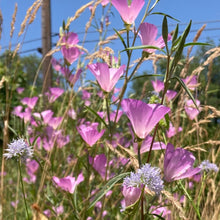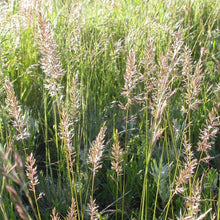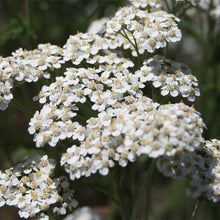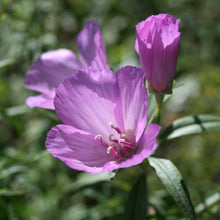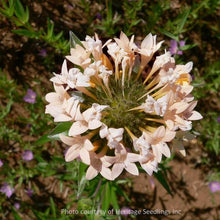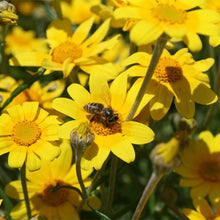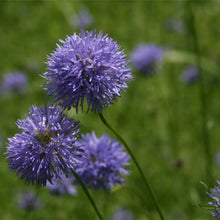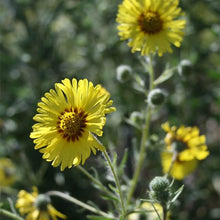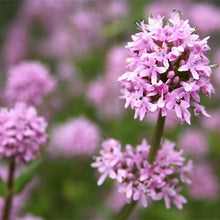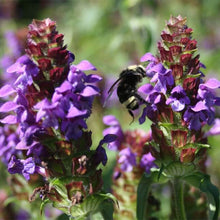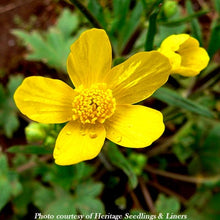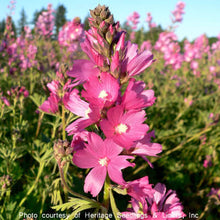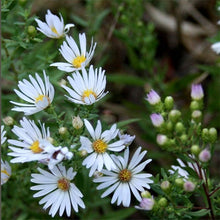
This LARGE PACK Sun-Kissed Meadow Mix is perfect for gardeners looking to add a large, sunny and dry meadow using both native wildflowers and grasses covering 125 sq ft.
The species in it are some of our most tenacious and easy to grow. They do great with our wet winters and springs but even better with our dry, sunny summers. The extended bloom period from mid-spring through mid-fall assures you that there’ll always be a little something going on. We’ve also included 2 of what we consider our prettiest upland grasses to balance out this well-rounded, simple mix (this mix contains 25% grass). (Willamette Wildlings)
LARGE PACK covers approx 125 sq ft.
Species included:
Festuca roemerii - Roemer's fescue
Koeleria macrantha - Prairie junegrass
Achillea millefolium - Western yarrow
Clarkia amoena - Farewell-to-spring
Clarkia purpurea spp quad - Diamond clarkia
Collinsia grandiflora - Large-flowered blue-eyed Mary
Collomia grandiflora - Grand collomia
Eriophyllum lanatum - Oregon sunshine
Gilia capitata - Blue gilia
Madia elegans - Common madia
Plectritis congesta - Sea blush
Prunella vulgaris v. lanc - Lanceleaf self-heal
Ranunculus occidentalis - Western buttercup
Sidalcea compestris - Meadow checkermallow
Sidalcea virgata - Rose checkermallow
Symphyotrichum (aster) hallii - Hall's Aster
Wildflower meadow establishment
Site location and Preparation:
Wildflower meadows need an open sunny area with at least 6 hours of full sun per day to thrive. Reduce weeds on the soil surface prior to sowing – good site prep is crucial for success. Try not to skimp on this part of the process. Your site should be as free of existing vegetation as possible. Sod removal, seedbank removal, solarization, sheet mulching, digging, and any combination thereof are all options. Tilling, however, is not recommended as it will bring a whole host of weed seeds to the surface where they will germinate – they are best left buried!
Timing:
In the Willamette Valley, September through November is the best time for planting wildlflower seed mixes. They can still be planted into late winter, but this is not optimal. Most of these species need some exposure to cool temperatures and damp conditions before germination can occur – and the period of exposure varies from species to species. If planted too late in the fall/winter season, some species may not receive their required stratification period and, therefore, may not germinate.
Seeding Tips:
Seed/Sq Ft: A common target seeding rate for the Willamette Valley is 30 – 60 seeds/sq. ft. With the lower end being on a very clean site and the upper end being a site with some existing vegetation.
One option is to mix the seed with a cutting agent for the best distribution. Inert materials such as vermiculite, coarse-textured sand, rice hulls, and sawdust are all viable options. Mix seed with equal or greater amount of cutting agent. To help achieve a more uniform distribution you can cut the mixture in half. Apply half walking in one direction and the other half walking in a perpendicular direction.
It is OK to cover seed with a light dusting of soil (sift potting soil through a sieve to dust the seeded area with fine soil). Cover only until you can barely see the cutting agent – no more. Some seed species need light to germinate. However, this very thin layer may help hasten germination and help minimize seed predation.
Post-seeding care:
Watering: If there is no rain in the immediate forecast, water in the newly sown seeds. Also, if there is no rainfall within a few days, water only lightly as needed until you see some seeds sprouting.
Fertilizing: It is not necessary to fertilize your wildflower meadow under normal conditions. Native plants do not require fertilizer, and the application of fertilizer with high nitrogen content will tend to encourage weed growth.
For information regarding Meadowscaping, check out this link and their awesome handbook:
Photo Credit July Meadow: Tracy Cozine, Sparrowhawk Native Plants
Photo Credit Prairie Junegrass: "Koeleria macrantha" by Matt Lavin is licensed under CC BY-SA 2.0
Photo Credit flowers: Willamette Wildlings













